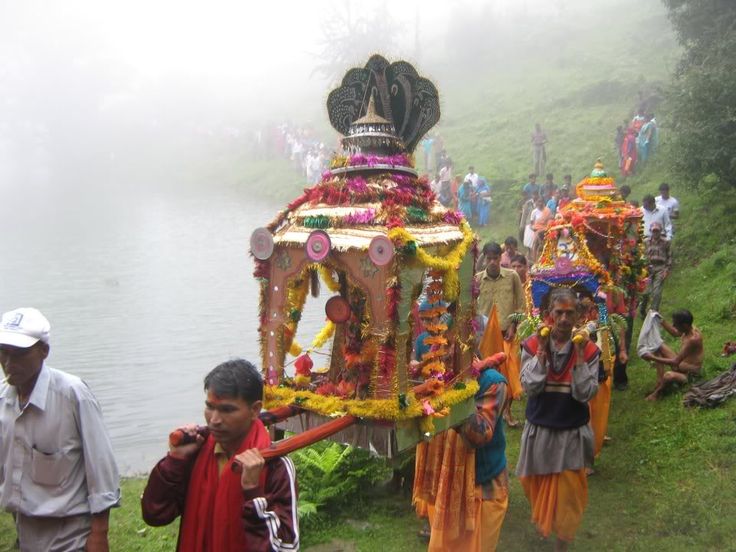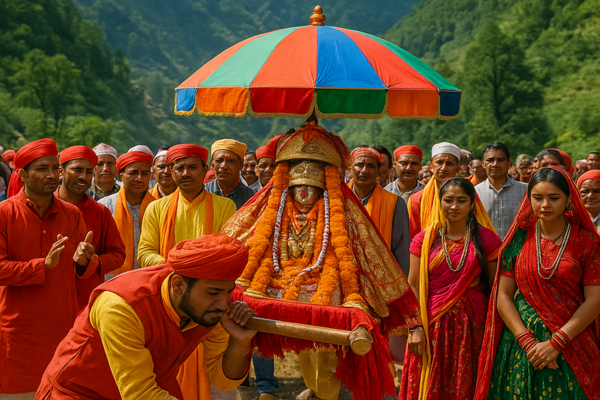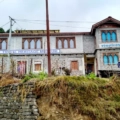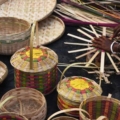Festivals of Uttarakhand

The Indian Himalayas stole my heart—not just for their misty peaks but for the way Uttarakhand’s festivals bring the hills to life. I’ve stood in villages where the air hums with old songs, where colors pop against the green, and where every ritual feels like a story whispered by the mountains. These festivals aren’t just events; they’re a doorway into the soul of Himalayan life, whether you’re trudging through the trails or just dreaming of them from afar.
Major Festivals of Uttarakhand You Should Experience

1. Nanda Devi Raj Jat Yatra
Every 12 years, the Garhwal hills turn into a pilgrimage like no other. They call it the ‘Himalayan Kumbh,’ a 280 km trek to honor Goddess Nanda Devi. I’ve seen villagers and travelers weave through rocky paths, their voices carrying prayers and songs for 22 days. It’s tough, but the devotion in the air makes every step feel sacred.
Best Time: August – September (once every 12 years)
Tip: Get your hiking boots ready months ahead—this trek tests your stamina.
2. Harela – The Festival of Harvest
In Kumaon, Harela feels like the earth’s own celebration. As monsoon clouds roll in, families tuck seeds into clay pots, murmuring prayers for a good crop. I watched a grandmother teach her grandkids to plant, her hands steady and her smile full of hope. It’s a quiet moment that ties you to the land.
Best Time: July
Interesting Fact: “Harela” means “greenery,” and it’s all about new beginnings.
3. Phool Dei – A Springtime Bloom
This one’s pure joy. Little girls wander village lanes, tossing flower petals and rice at doorsteps, giggling as they wish for happiness. I followed a group once, their baskets overflowing with marigolds, and it felt like spring itself was dancing.
Best Time: March
Ideal For: Anyone who loves snapping photos or soaking up sweet traditions.
4. Makar Sankranti – Ghughutiya in the Hills
Makar Sankranti here is different. Families shape dough into tiny bird-like sweets called Ghughuti and set them out for crows, hoping for blessings from those who came before. I’ve seen kids squeal as kites swoop in the crisp January sky—a perfect mix of solemn and fun.
Best Time: January
Cultural Highlight: The kite-flying showdowns are a sight to behold.
5. Basant Panchami – Celebrating Knowledge and Spring
The hills glow yellow for Saraswati, the goddess of wisdom. I watched a village school buzz with kids starting their first lessons, their parents beaming. It’s a day for learning and spring’s fresh promise.
Best Time: February
6. Ghee Sankranti – The Festival of Strength
This festival’s a bit of a hidden treasure. Locals feast on ghee-drenched dishes made with wheat and jaggery, and in some villages, burly guys wrestle to show their strength. I tried the food once—rich and hearty—and cheered at a match under the summer sun.
Best Time: August
7. Kandali Festival – A Bloom Once in 12 Years
In Pithoragarh, when the Kandali flower blooms, the hills throw a party. I haven’t seen it myself—it’s rare, every 12 years—but I’ve heard of the dances and playful mock battles that celebrate this fleeting gift from nature.
Best Time: Only when the flower blooms—next in 2031.
Travel Tips for Experiencing Festivals in Uttarakhand
- Plan Early: Some festivals follow the moon, others happen once a decade—check dates well ahead.
- Be Respectful: Dress simply and join rituals with a quiet heart if you’re welcomed in.
- Grab a Local Guide: The best stories aren’t written down—a guide can share the tales behind the traditions.
- Pack Light but Smart: Remote villages might not have shops or clinics, so bring water and basics.
- Keep the Hills Clean: Stick to eco-friendly stuff to honor the Himalayas’ beauty.
Best Time to Visit for Cultural Festivals
- Spring (March–May): Phool Dei and Basant Panchami fill the hills with color and warmth.
- Monsoon (July–September): Harela’s green vibes shine, and Nanda Devi Raj Jat is unmissable in its year.
- Winter (January): Kumaoni Makar Sankranti brings cozy traditions to the cold.
Why You Should Attend These Festivals
These festivals are the Himalayas’ heartbeat, stitching together people, land, and faith. You’ll:
- Feel the deep roots of Garhwal and Kumaon culture.
- Watch rituals and hear songs that carry centuries of meaning.
- Trade tourist traps for real moments in sleepy villages.
Final Thought
Uttarakhand’s festivals aren’t just dates on a calendar—they’re the hills telling their stories, full of heart and history. Whether you’re packing to join the crowds or just picturing these moments, they’ll stir your soul.
Drop a comment with your thoughts or dreams for this journey.
📌 Follow Destinatinguruji on Instagram and Facebook [@destinationguruji] for more travel stories and real-time updates.
🌐 For more visit my website :- exploremountains.com



